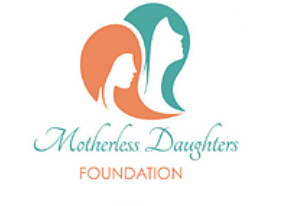“The difference between success and failure is that success perseveres in the face of adversity, and failure quits along the way. It doesn’t matter how you started; it matters how you finish.”
Recidivism Facts
What causes high recidivism rates?
An offender’s educational illiteracy, lack of vocational job skills, lack of interpersonal skills, or criminal history are primary causes to increasingly high recidivism rates.
How does incarceration affect the community?
High incarceration rates may also have harmful effects on communities due to determinants such as a loss of working-age adults in the community, heightened exposure to communicable diseases, and changing federal, state, and local resources from health and social support to the correctional system.
What kind of economic impact imprisonment can have on a community?
- Low-income individuals are more likely than higher-income individuals to be victims of crime.
- The majority of criminal offenders are younger than age thirty.
- Disadvantaged youths engage in riskier criminal behavior.
Welcome to
GAME CHANGERS
Re-Entry & Mentorship Program

IT'S ABOUT OPPORTUNITY!
OUR MISSION
To promote successful reentry and reduce recidivism through educating, equipping, and empowering returning citizens with the necessary resources, thus strengthening the fabric of our communities.
HELP US REACH OUR GOAL
We build skills and confidence every time a participant utilizes our services, ending recidivism one participant at a time.
HOW OUR PROGRAM WORKS
Game Changers Re-Entry and Mentorship Program seeks to reduce recidivism through early intervention, mentoring the whole person (psychologically, emotionally, intellectually, and socially) reducing the overall jail population. The model below shows our approach to anti-recidivism, an interception model that introduces each interception point and defines key performance indicators to reducing recidivism.
Participants that are referred through the courts early in the legal process to a full continuum are then assessed by our team of experts to personalize a program that fits the participant's needs. Upon completion of the program, participants and their family members take part in a formal graduation ceremony that celebrates the journey from recidivism to a newly visioned lifestyle.
Community
Service
Speak to the fundamental funding and knowledge limits to widen and strengthen accessibility to recidivism treatment that integrate mental and substance abuse counseling.
Explore changes to existing national, state, and local judicial policies and practices surrounding mass incarceration and for-profit prisons to transition from jail back to the community.
Law
Enforcement
Investigate how to define "diversion" within the communication lines of dispatch and law enforcement organizations.
Pinpoint and decrease barriers to data collection across law enforcement agencies.
Investigate how to define "diversion" within the communication lines of dispatch and law enforcement organizations.
Initial Detention/Courts
Implement a standardized anti-recidivism screening at detainee booking to augment identification of first-time and repeat offenders, mental health and substance abuse issues.
Implement a plan of action to include regular screening tools to incarceration management systems.
Improve partnership between courts Game Changers Re-Entry and Mentoring to increase both pre-booking and post-booking diversion.
Jails and
Courts
Evaluate the length of stay differences between repeat offenders with and without severe mental health or substance abuse, homelessness, or unemployment issues - including conducting a risk assessment before making incarceration decisions, determining the implications of crisis intervention training, and identifying recidivism indicators such as age, sex, race, time to failure, crime severity, and behavioral changes.
Re-Entry &
Incarceration
Reduce after hours jail releases for individuals identified as having severe mental illness or substance abuse problems, or in a state of homelessness.
Increase release planning strategies to improve the city, county, and state recidivism rates.
Train previously recidivated individuals who have graduated from the Game Changers Re-Entry and Mentorship program to liberate those still in the recidivated community.
Community
Corrections
Build and strengthen relationships between Game Changers Re-Entry and Mentorship Program and Probation/Parole Staff to reduce violations that result in recidivism including excessive caseloads, formal collaboration and case evaluation, and mental health and substance abuse training.
Engage community leaders to reduce recidivism through community programs for the youth, job fairs, mental and substance abuse screening, referral programs, etc.








